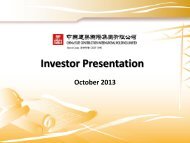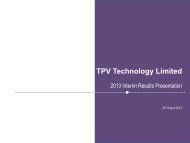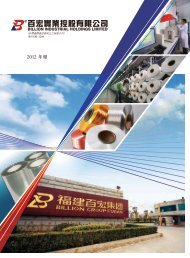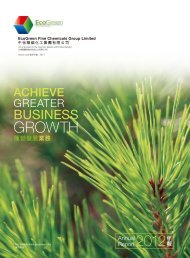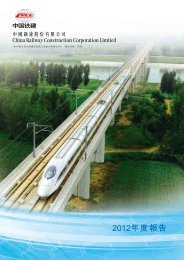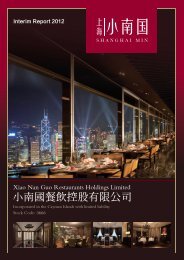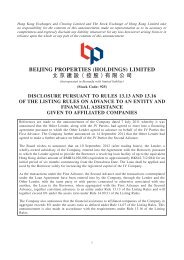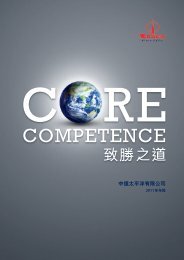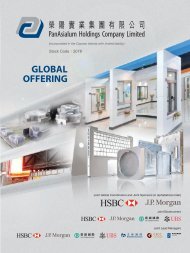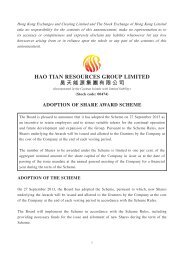Annual Report - QuamIR
Annual Report - QuamIR
Annual Report - QuamIR
Create successful ePaper yourself
Turn your PDF publications into a flip-book with our unique Google optimized e-Paper software.
Notes to the Consolidated Financial Statements (Continued)<br />
<br />
2 Summary of significant accounting policies (Continued)<br />
2.27 Provisions (Continued)<br />
Where there are a number of similar obligations, the likelihood<br />
that an outflow will be required in settlement is determined by<br />
considering the class of obligations as a whole. A provision is<br />
recognised even if the likelihood of an outflow with respect to any<br />
one item included in the same class of obligations may be small.<br />
2 <br />
2.27 <br />
<br />
<br />
<br />
<br />
Provisions are measured at the present value of the expenditures<br />
expected to be required to settle the obligation using a pre-tax<br />
that reflects current market assessments of the time value of<br />
money and the risks specific to the obligation. The increase in<br />
the provision due to passage of time is recognised as interest<br />
expense.<br />
2.28 Revenue recognition<br />
Revenue comprises the fair value of the consideration received<br />
or receivable for the sale of goods, properties and services in the<br />
ordinary course of the Group’s activities. Revenue is shown net<br />
of business tax and after eliminating sales within the Group.<br />
<br />
<br />
<br />
<br />
<br />
2.28 <br />
<br />
<br />
<br />
<br />
The Group recognises revenue when the amount of revenue can<br />
be reliably measured, it is probable that future economic benefits<br />
will flow to the entity and specific criteria have been met for<br />
each of the Group’s activities as described below. The amount<br />
of revenue is not considered to be reliably measurable until all<br />
contingencies relating to the sale have been resolved. The Group<br />
bases its estimates on historical results, taking into consideration<br />
the type of customer, the type of transaction and the specifics of<br />
each arrangement.<br />
<br />
<br />
<br />
<br />
<br />
<br />
<br />
<br />
<br />
(i)<br />
Revenues from infrastructure and alternative energy are<br />
generated from water supply, electricity supply and the toll<br />
road. They are recognised based on the following:<br />
(i)<br />
<br />
<br />
<br />
(a)<br />
Revenue arising from water supply is recognised<br />
based on water supplied as recorded by meters<br />
read during the year.<br />
(a)<br />
<br />
<br />
<br />
(b)<br />
Revenue arising from electricity supply is recognised<br />
when electricity is supplied to the provincial grid<br />
(b)<br />
<br />
<br />
companies.<br />
(c)<br />
Revenue arising from toll road is recognised when<br />
services are rendered.<br />
(c)<br />
<br />
<br />
106 HKC (Holdings) Limited • <strong>Annual</strong> <strong>Report</strong> 2011



